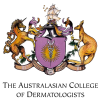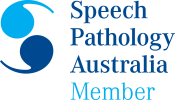Our sinuses are air-filled cavities located near our nasal passages. Similar to those nasal passages, our sinuses are lined throughout the interior by mucous membranes. There are four distinct types of sinuses. They include:
- Maxillary sinus – This sinus is felt below the area of the cheeks. This particular sinus is present when they are born, and grows while they age.
- Ethmoid sinus – This sinus is found in the area of your child’s nose bridge. Like the maxillary sinus, it is present at birth and it continues to grow.
- Frontal sinus – This sinus is present in the forehead area. It is not as often affected by sinusitis in children, since it does not develop until your child is about seven years old.
- Sphenoid sinus – This sinus is located behind the nose, deep inside the face. It does not develop until your children are adolescent aged.
What is sinusitis in children?
Sinusitis is quite simply an infection of the sinuses located near your child’s nose. These will normally occur after allergic inflammation or a cold. Sinusitis can be one of three types:
- Acute sinusitis – this type of sinusitis occurs more quickly and improves when treated appropriately
- Subacute sinusitis – this type will not usually improve with initial treatment, and it generally lasts less than three months
- Chronic sinusitis – this occurs after repeated episodes of acute infections, or with infections that your child experienced previously, that were not adequately treated. This usually lasts beyond three months
What are the causes of sinusitis?
In some cases, sinus infections occur after your child experiences a common cold or an upper respiratory infection or URTI. These diseases cause nasal passage inflammation that may block the opening of their paranasal sinuses. This results in an infection of the sinuses. Allergies may also lead to a case of sinusitis because of nasal tissue swelling and increased mucus production.
Other conditions may also affect your child by blocking normal secretion flow from the sinuses, and leading to sinusitis. They include:
- Enlarged adenoids
- Abnormalities in nasal structure
- Tooth infections
- Swimming and diving
- Foreign objects
- Nose trauma or injury
- Cleft abnormalities
When the normal flow of sinus secretions is blocked in some way, bacteria may start to grow, leading to an infection of the sinus, or sinusitis. The bacteria that most often cause sinusitis in your child include:
- Haemophilus Influenzae
- Streptococcus Pneumonia
- Moraxella Catarrhalis
What are the main sinusitis symptoms?
Your child’s age will affect their sinusitis symptoms. The most common symptoms for younger children include:
- Infection lasting longer than a week
- Runny nose
- Clear discharge that may be thick yellow or green
- Occasional daytime cough
- Nighttime cough is noted more frequently
In older children, symptoms can include:
- A drip occurs in the throat from the nose (post-nasal drip)
- Cold symptoms or a runny nose lasting more than a week or 10 days
- Facial discomfort
- Headaches
- Cough
- Bad breath
- Sore throat and fever
- Swelling around his eyes may occur, and it is usually worse in the morning
Treatment for sinusitis
Treatment may include panadol for discomfort and a cool mist humidifier used in your child’s room. Antibiotics may be prescribed by your child’s ear, nose and throat specialist, for 10 to 14 days or longer.
If you have any questions about treating sinusitis in children please contact your local doctor who will arrange for your to see your ear nose and throat specialist.
The post Treating Sinusitis in Children appeared first on ENT Clinic Sydney.










